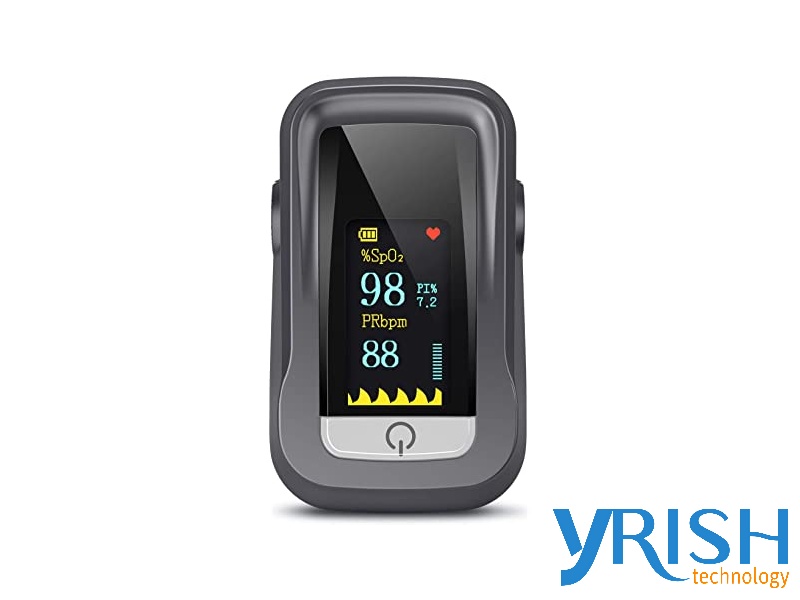The SpO2 measurement is carried out optically by means of a light beam that is sent from an infrared light source and is collected by a photosensitive sensor.
Pulse oximetry is a non-invasive procedure to continuously measure arterial oxygen saturation (SaO2) at the site where the sensor is placed, usually on the finger, earlobe, or toe.
What is pulse oximetry and why is it important?
Pulse oximetry (percentage of SpO2 concentration in blood) has been used as a key health indicator for many decades. Although the original academic development was made in 1935, the modern basis for determining SpO2 concentration using light sources and photosensors was developed by Takuo Aoyagi and Michio Kishi in 1972. Where commercially feasible, SpO2 concentration measurement devices have made huge profits in Medical Applications. Since 1987, the standard of care (SoC) for the administration of a general anesthetic has included pulse oximetry. All modern hospital bedside equipment includes an SpO2 module based on the same fundamentals, albeit with minor modifications.
Pulse oximetry is used to measure the level of oxygen (oxygen saturation) in the blood. It is a simple, painless measure of how well oxygen is delivered from your heart to parts of your body, such as your arms and legs. It can be used to check if there is enough oxygen in the blood and to check the health of a person with any condition that affects blood oxygen levels.

Card Title
The device
- The sensor hub built into our device does all the vital sign calculations and provides you with the final result.
- Built to the shape and size of a finger, it is ideal for measuring vital signs with a velcro strap hole to attach your finger.
- Internal algorithm for measuring pulse heart rate, pulse blood oxygen saturation (SpO2) and estimated blood pressure trend.
- It integrates a highly sensitive pulse oximeter, a heart rate sensor and a biometric sensor hub.
- It incorporates an accelerometer for the detection and compensation of movements.

